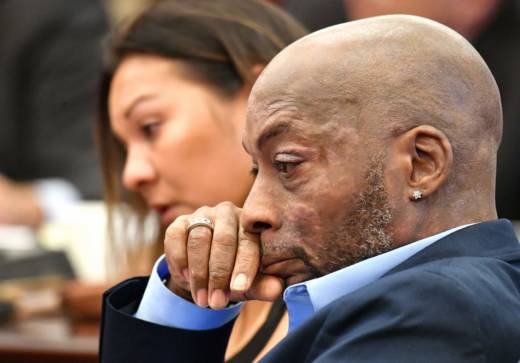So does glyphosate cause cancer?
Scientifically, the evidence is mixed.
Animal-based lab studies have shown that rats and mice exposed to glyphosate sometimes get tumors, which can be cancerous. But the tumors that rats and mice got weren’t consistent: They didn’t appear in the same place on every rat; some rats never got them; and the tumors didn’t seem to be dose-dependent. These studies haven’t yet told a clear story about the mechanism for why the tumors, and cancer, show up.
In humans, research has yet to find a statistically significant connection between cancer and glyphosate — possibly because there isn’t any or maybe because people are exposed to a lot of carcinogens, and generally it’s hard to tease out the effects of just one. So this is an area where opposing experts in court spend a lot of time debating.
Meanwhile, oversight bodies around the world have come down on different sides of the issue. The World Health Organization decided glyphosate was a probable human carcinogen. The European Food Safety Authority concluded that it probably isn’t. In the U.S., the EPA says glyphosate “has low toxicity for humans.” But California has listed glyphosate as a known cancer-causing chemical.
What do the people who claim Roundup gave them cancer need to prove to win?
The lawsuits that courts are considering, in California, in federal courts, and in other states, are civil claims, focused on questions of product liability. The plaintiffs assert that Roundup had a design defect that made them sick, and that its manufacturer had a responsibility to warn them about it. They also claim Monsanto was negligent in selling the weed killer, and that the company violated an implied warranty that the product is safe.
To prove that, plaintiff’s lawyers focus on two questions of causation:
- General causation — the idea that glyphosate causes or contributes to cancer
- Specific causation — the idea that the glyphosate in Roundup caused or significantly contributed to cancer for each person who says they were wronged.
Well, can the plaintiffs prove that?
In terms of the law, maybe.
The way courts and juries look for proof of causation is different from the way scientific research does. Dr. Steven Goodman, who heads the Meta-Research Innovation Center at Stanford, say that “in science you want to make claims that have the appropriate caveats and limitations and cautions and uncertainties, and things move up and down the scale of certainty depending on evidence as it comes in or out.”
But in the U.S. legal system, decisions are made according to an understanding of science at one moment in time, even though that understanding may evolve.
Another difference is that in civil cases, the legal standard for liability is a “preponderance of the evidence,” which you can shorthand as a greater than 50 percent chance that something is true.
Effectively, then, scientific certainty isn’t necessary for legal decisions finding Roundup responsible for cancers.
“The human studies are not very supportive of the conclusion of causation right now,” says David Faigman, chancellor and dean of the University of California, Hastings College of the Law. “That’s not to say that they won’t be in the future, but we’re allowing these hundred-million-dollar verdicts on the basis of animal studies for the most part and cell studies, and maybe a little bit with what’s called biological plausibility.”
Who decides what science to use in courtrooms?
In federal courts, judges are gatekeepers for scientific and expert testimony. In deciding what to allow, they use the Federal Rules of Evidence and something called a Daubert test, established in Daubert v. Merrell Dow Pharmaceuticals. The Daubert test uses several factors in assessing scientific evidence, including whether it has “attracted widespread acceptance within a relevant scientific community.”
“[Judges] have to examine whether the scientific basis for the offered expert testimony is valid or not valid,” says UC Hastings’ David Faigman.
Still, judges may decide to interpret that responsibility differently. Federal district Judge Vince Chhabria is overseeing close to 400 cases, and presided over the Hardeman trial that recently wrapped up. During the proceedings, he held a “science week,” in which experts in cancer, toxicology, epidemiology and other specialties testified and faced cross examination. In the end, Judge Chhabria divided the civil trial into two parts, asking the jury to first decide whether glyphosate contributed to Hardeman’s cancer, and then to decide on penalties.
Some state courts follow a similar analysis for expert testimony, but in California the standard is based on older case law, which is more favorable to plaintiffs. That is one reason, says Faigman, that plaintiffs’ attorneys may seek to bring cases here.
Who’s winning?
So far, not Monsanto, though it’s still early.
More cases are getting underway. In Alameda County Superior Court, lawyers are presenting evidence about the claims of Alva and Alma Pilliod, who used Roundup on multiple residential properties for nearly 40 years. Next month, another case heads to federal court, and that will also be tried by Judge Chhabria.
It’s too early to assess the significance of just two jury trials. Still, there’s something to be said for momentum. “There’s no question that this accumulation of judgments matter as a group,” says Faigman. “I think if they were splitting in different directions, then Monsanto might have greater faith that things could turn around for them also, as a group. But right now it doesn’t seem to be going that way.”

